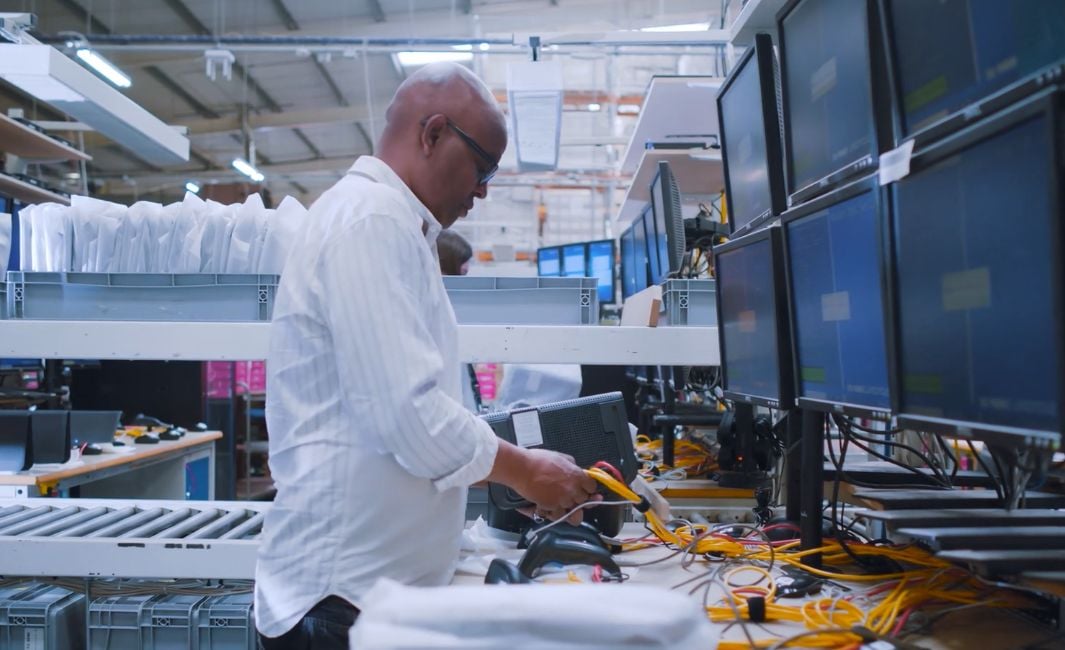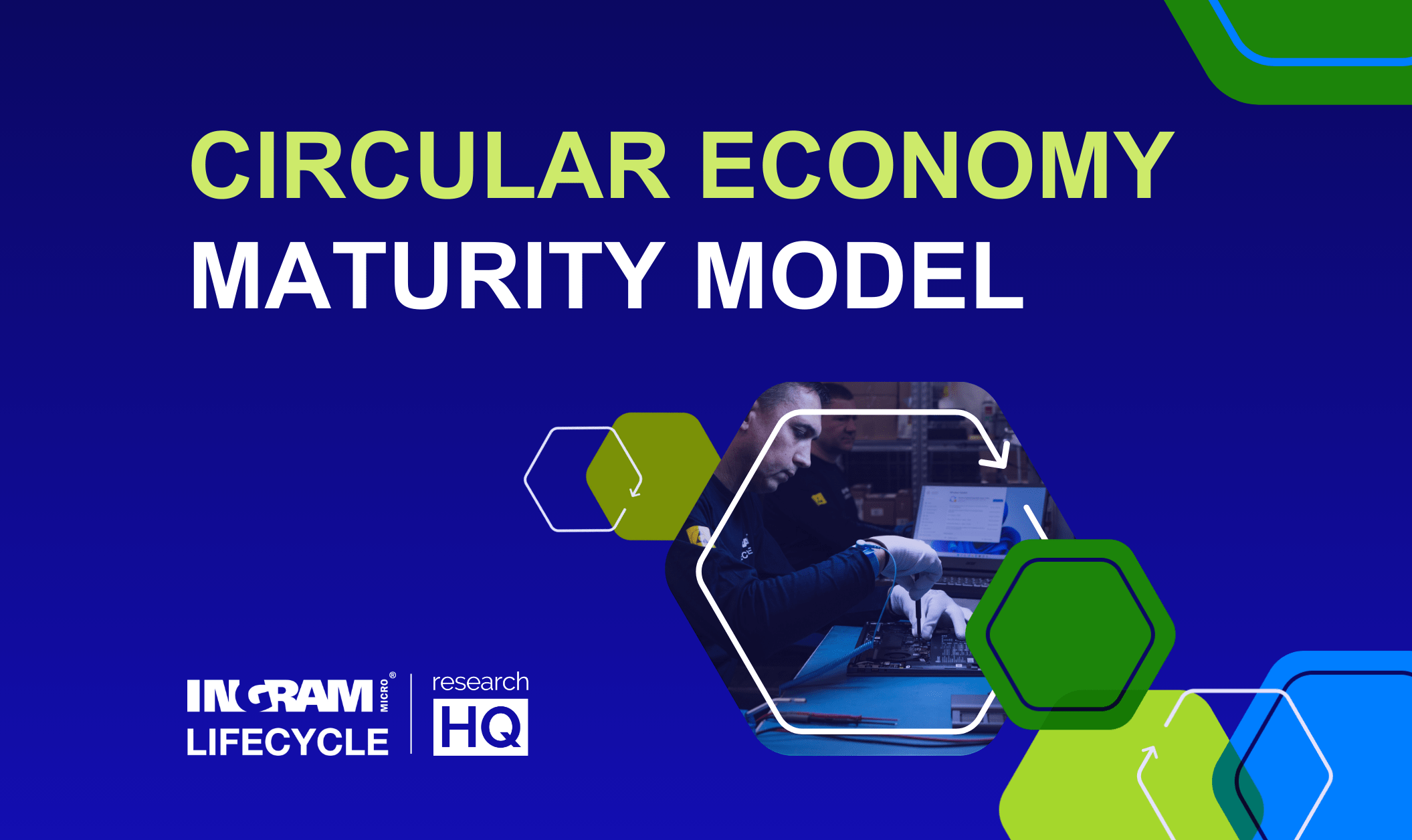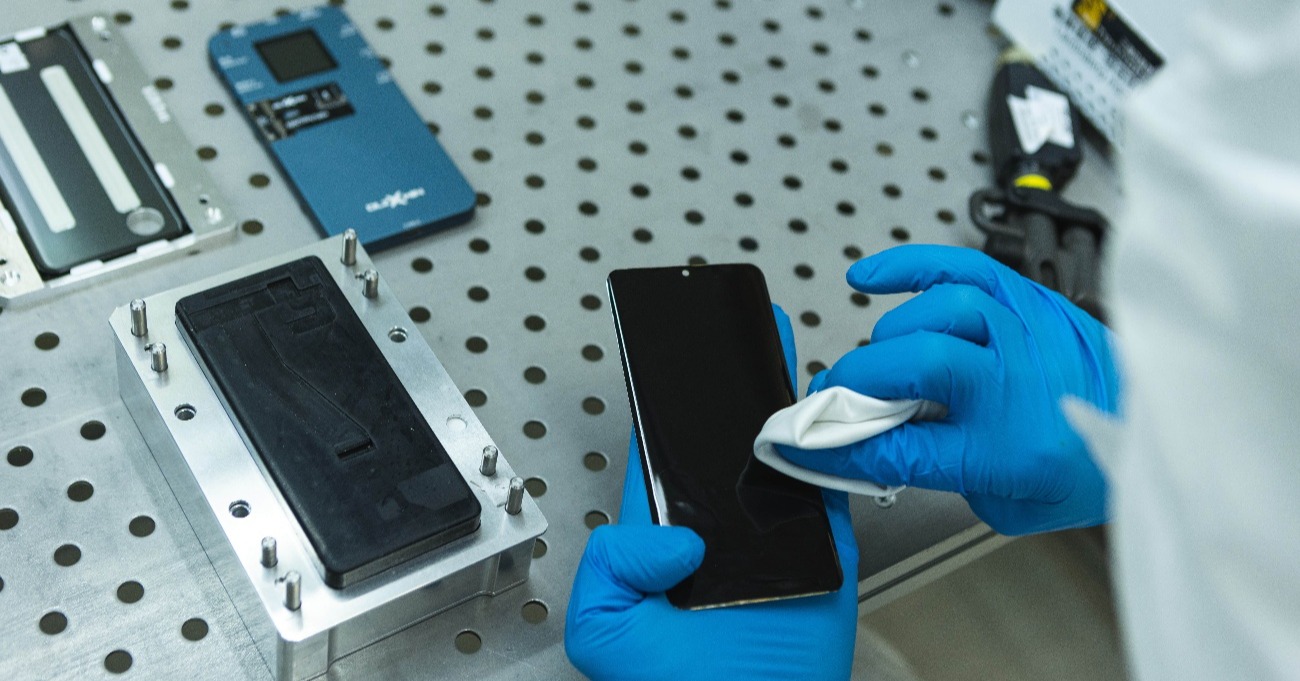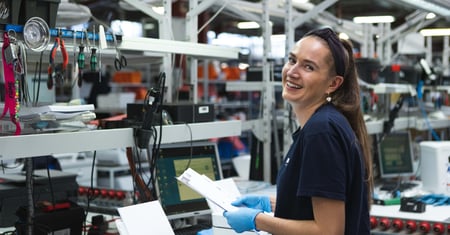For many businesses, returned and unwanted products are seen as a sunk cost, creating operational headaches and eroding margins. This view not only overlooks the residual value of those assets and misses the chance to turn a negative customer experience into a positive one.
Ingram Micro Lifecycle is an expert reverse logistics and repair partner, supporting businesses with their unwanted enterprise technology and consumer electronic returns for over 30 years. We work with retailers, insurers, OEMs, and network operators to recover and recommerce traded-in and returned assets.
Recommerce is rapidly transforming how businesses and consumers think about product returns and resale. Far from being a niche practice, it offers a secure, sustainable, and commercially valuable route to extend product lifecycles while reducing waste. Yet, despite its growth, misconceptions persist that can prevent organizations from fully realizing its potential.
Defining recommerce
At the most basic level, recommerce is the buy and sell of goods.
Building on that, it’s getting assets and products from end users and businesses, providing the logistics and operational processing of those goods, and then reselling or redistributing them to obtain a secondary commercial value.
There’s a critical layer that ensures this opportunity is conducted in a way that’s safe, secure, affordable, and accessible, so more people engage with it.
Most common myths and misconceptions
Returned products are just a sunk cost.
Untrue: The recommerce of returned products unlocks a new revenue stream whilst reducing waste and attracting new customers.
Returned or unwanted products are part of a customer’s typically negative journey – not always, but most often. They have an item they no longer want, and there are a variety of factors that cause this.
Recommerce is a way to take that negative journey and transform it to a positive one, putting a value on that unwanted product for your business to recover. It goes beyond economic value and gives what could become e-waste a more sustainable path.
No-one wants to buy used technology.
Untrue: The refurbished mobile device market is expected to grow to $140 billion by 2030 – growing twice as quick as the market for ‘new’ smartphones.
Recommerce platforms and brands are instilling more confidence in customers around the quality of the refurbished product. There was once a stigma that these products were lower quality with lesser performance, but that is no longer the case.
Opting to choose refurbished over new has multiple benefits for the customer. Refurbished goods are now increasingly attached to warranties and guarantees around functionality, battery health, and cosmetic condition. Manufacturer standards are upheld via OEM accreditations, ensuring repairs align to their approved instructions and use their own designed tooling.
A growth in technology on the market has pushed innovation behind the scenes to ensure repair and refurbishment solutions are a higher quality, delivering better outputs. Returned products are routed through more stringent tests and analyses, often automated to reduce human bias and improve consistency.
Data-bearing assets are compliantly and securely wiped via industry-approved software that provides an auditable, certified trail to guarantee the security of customer data. Users no longer have the same degree of concern they once had about the take-back and use of preloved devices.
Additionally, there’s rising awareness around the harmful impacts of our technology consumption. Users are more educated on the sustainability benefits of trading-in unwanted tech to avoid increasing landfill waste, and of choosing refurbished tech over brand-new for minimizing the consumption of finite resources. Technology ownership is shifting as a status symbol from how much disposable income you have to how environmentally aware you are. It’s becoming almost trendy to not have the “latest and greatest” tech on the market.
Refurbished goods are increasingly seen as a comparable alternative for buying brand-new products. When technology has, to a degree, plateaued, consumers aren’t willing to pay increasing amounts for technology that doesn’t carry a hugely different specification from the prior model. They can pay less money for a product that’s a year or two old and have technology that’s not too dissimilar from the newest models.
Refurbished devices are poor quality.
Untrue: A growth in innovation has led to higher standards and higher quality outputs.
As highlighted above, technology behind the scenes has improved from several years ago. These solutions dispel the idea that used devices retain cosmetic flaws and functional issues. Consumers have confidence when purchasing refurbished devices from a reputable seller that they’re acquiring technology that has been suitably processed through lifecycle extension services.
There’s no value in a used or returned product.
Untrue: You need to interpret data correctly to realize the residual value of assets.
It can be commercially challenging to keep on top of what a product is worth. Values are constantly fluctuating based on supply and demand. This means you need access to the correct data for analysis and the knowledge to read trends to create accurate pricing forecasts.
It’s understandable that this challenge may be too big a barrier for businesses to overcome in-house and so it can be outsourced to a recommerce partner. They’ll have the necessary expertise and resources to adjust pricing accordingly and recover maximum value for your refurbished products.
We must destroy data-bearing assets, not re-use them.
Untrue: Unless the data on your assets is severely high-risk, data can be compliantly wiped.
Legacy processes within your business may dictate the destruction of corporate or customer hardware, such as mobiles and laptops. This is typically a service that you’ll pay an external third party to do; getting motherboards and drives shredded so data can’t be physically recovered.
However, new software guarantees that no end-user data will be left on data-bearing devices. This gives new confidence that assets can be reused with no risk of residual data. The software provides robust audit trails down to the serial numbers of assets to prove data has been compliantly and securely erased.
Recommerce steals new product sales.
Untrue: Recommerce introduces your products to a new segment of the market that isn’t loyal to your brand.
The target market for refurbished products is different from that which will buy brand-new products. Those seeking refurbished products are motivated by price and sustainability factors. They may not be able to afford the price tag of a brand-new product. Through recommerce, you’re welcoming new customers to your brand.
Recommerce adds an incremental margin as opposed to diluting an existing one.
Ready for a second look?
Recommerce is no longer a secondary option but a strategic necessity for businesses looking to recover value, build customer trust, and meet sustainability goals. By overcoming outdated misconceptions, organizations can see that refurbished and reused products bring incremental revenue, open new customer segments, and extend the life of valuable technology. With the right partner and processes in place, recommerce transforms returns from a liability into a powerful driver of growth and circular economy progress.
Reach out to our team today to see how we can seamlessly integrate recommerce processes into your business.
Related articles:
- Video: demystifying recommerce
- Tactics for elevating your returns management process
- Why recommerce is the future of tech sustainability & business growth
- How reverse logistics efficiency impacts potential value recovery
- Does recommerce cannibalize new product sales?
- How gaps in data security can expose your business to e-waste hacking














